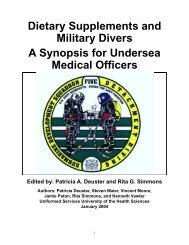Force Health Protection: Nutrition and Exercise Resource Manual
Force Health Protection: Nutrition and Exercise Resource Manual
Force Health Protection: Nutrition and Exercise Resource Manual
Create successful ePaper yourself
Turn your PDF publications into a flip-book with our unique Google optimized e-Paper software.
◆ Saturated Fats are solid at room temperature <strong>and</strong> are found<br />
primarily in animal foods (red meats, lard, butter, poultry with<br />
skin, <strong>and</strong> whole milk dairy products); tropical oils such as palm,<br />
palm kernel <strong>and</strong> coconut are also high in saturated fat.<br />
◆ Monounsaturated Fats are liquid at room temperature <strong>and</strong> are<br />
found in olive oil, canola oil <strong>and</strong> peanuts.<br />
◆ Polyunsaturated Fats are liquid at room temperature <strong>and</strong> are<br />
found in fish, corn, wheat, nuts, seeds, <strong>and</strong> vegetable oils.<br />
Saturated, monounsaturated, <strong>and</strong> polyunsaturated fats should each be<br />
less than or equal to 10% of your total daily kcals. Therefore, total fat intake<br />
should be less than or equal to 30% of your total daily kcal intake.<br />
(Canola, Olive, <strong>and</strong> Peanut oils)<br />
◆ Trans Fats are created during manufacturing by a process<br />
known as hydrogenation. This process converts unsaturated fats<br />
to saturated fats. Manufacturers hydrogenate foods to improve<br />
the shelf-life of their products. Currently, food labels do not list<br />
the trans fat content of a food but if “hydrogenated oils” are listed<br />
under ingredients it indicates the presence of trans fats. The<br />
more processed foods you eat the greater your trans fat intake.<br />
Trans fats may increase blood cholesterol.<br />
A high-fat diet is associated with many diseases, including heart disease,<br />
cancer, obesity, <strong>and</strong> diabetes. On average, people who eat high-fat diets have<br />
more body fat than people who eat high-CHO, low-fat diets. On the other<br />
h<strong>and</strong>, a fat-free diet is also very harmful since fat is an essential nutrient<br />
required by the body (see a list of its functions below).<br />
Fats are used in the body to:<br />
◆ Provide a major form of stored energy.<br />
◆ Insulate the body <strong>and</strong> protect the organs.<br />
◆ Carry other nutrients throughout the body.<br />
<strong>Nutrition</strong> <strong>and</strong> <strong>Exercise</strong> <strong>Resource</strong> <strong>Manual</strong> 11




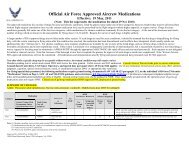

![Body Composition and Military [PDF] - Human Performance ...](https://img.yumpu.com/43269347/1/190x245/body-composition-and-military-pdf-human-performance-.jpg?quality=85)
![Tips for Grocery Shopping [PDF]](https://img.yumpu.com/37447379/1/190x245/tips-for-grocery-shopping-pdf.jpg?quality=85)
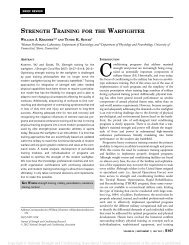
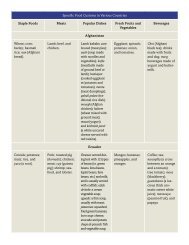
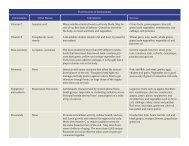
![Synthetic Drugs [PDF] - Human Performance Resource Center](https://img.yumpu.com/37447322/1/190x245/synthetic-drugs-pdf-human-performance-resource-center.jpg?quality=85)
